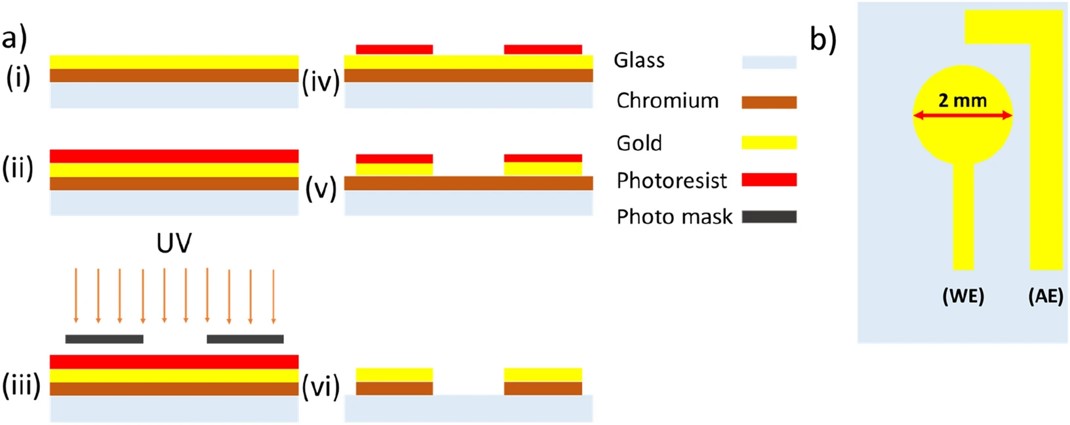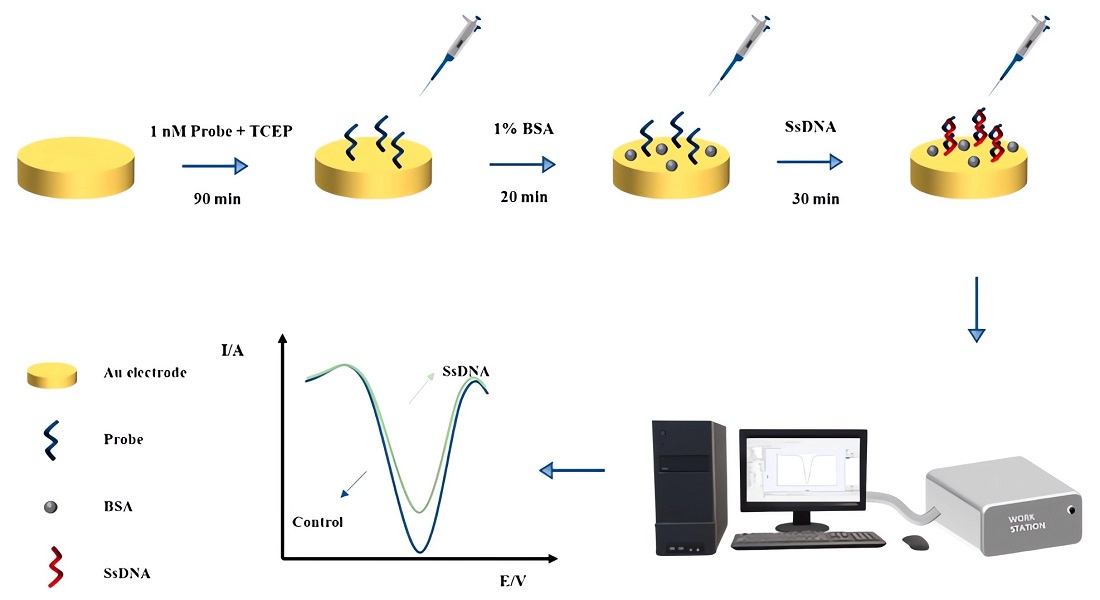Bacterial infections are urgent threats to human health, especially in light of rising rates of antibiotic resistance, and their ubiquity demands the development of efficient diagnostic platform. Electrochemical biosensors are garnering interest due to their speed, sensitivity, and selectivity as well as user-friendly operation. With rich experience in biosensor development and anti-bacterial research, Creative Biolabs provides bacterial detection services for worldwide clients by electrochemical biosensing.
New Emerging Biosensor versus Conventional Methods
The routine diagnosis of bacterial infections includes cell culture, nucleic acid (DNA or RNA) detection, and immunological techniques (antigen-antibody interaction). These detection methods have many advantages in dealing with complex samples, such as sensitivity and specificity. However, they are indeed time-consuming, cumbersome and highly rely on well-trained operators. These characteristics make them unsuitable for rapid diagnostics. In contrast, biosensors are portable, economical, and easy to operate, so they are more beneficial for point-of-care and on-site detection applications.
Electrochemical Biosensing
Currently, two main classes of electrochemical biosensors have been widely used, namely direct current (DC) and alternative current (AC)-based biosensors. Biorecognition elements for electrochemical biosensors, playing a role as a link between sensors and biological research, can be defined as biocatalytic or biocomplexing. Antibody and antibody fragments, peptides, oligonucleotides, and phages are the most commonly used biocomplexing biorecognition elements for bacteria detection. In general, affinity-based sensors are preferred over enzymatic biosensors for the detection of bacteria, due to their enhanced selectivity and specificity and lack of extra reagents required.

What can we do for you?
A variety of surface antigens presented on the envelopes of whole bacteria such as proteins, glycoproteins, lipopolysaccharides, and peptidoglycan can act as targets for biorecognition. Polyclonal antibodies (pAbs) raised against specific bacterial strains and monoclonal antibody (mAb) raised against specific antigen are the most commonly used bioreceptors for whole bacterial cell detection. Potentiometric, amperometric, and impedimetric electrochemical biosensors have been deeply researched by scientists at Creative Biolabs. Our rich experience in the preparation of biorecognition elements will definitely play an important role in the construction of biosensors. To fully achieve point-of-care detection of bacterial pathogens, key improvements have been made in electrochemical biosensors. We have conducted unremitting research in the following areas.
- Lowering limits of detection for early stage detection
- Decreasing detection time
- Detecting targets from unprocessed complex matrices
- Identifying specific bacteria from polymicrobial samples.
Electrochemical biosensors can take the leading position in this area. Advancements in nanobiotechnology and biomolecular engineering and developments in particle research are moving this field quickly toward its destination. If you are interested in bacteria detection by electrochemical biosensor, please feel free to contact us for more information.
Published Data
1. A Novel On-Chip Electrochemical Biosensor for Cryptosporidium Detection
 Fig.1 The fabricated electrochemical-based biosensor.1,3
Fig.1 The fabricated electrochemical-based biosensor.1,3
This paper introduced an affordable, simple-to-fabricate on-chip electrochemical biosensor for sensitive, label-free detection of Cryptosporidium oocysts in water samples. Fabricated through standard lithography with a 3-electrode design, the sensor was modified by self-assembling a hybrid layer of thiolated protein G and anti-Cryptosporidium monoclonal antibodies (IgG3). Using electrochemical impedance spectroscopy (EIS), they quantified C. parvum oocysts from 0 to 300 oocysts, with a detection limit of approximately 20 oocysts per 5 µL. The biosensor exhibited high sensitivity and specificity, making it a promising tool for rapid, real-time, and inexpensive on-site detection of C. parvum oocysts, surpassing traditional methods like PCR and microscopy. Additionally, this label-free platform could be optimized and extended for detecting other analytes and biomarkers, offering potential applications in both environmental monitoring and biomedical diagnostics.
2. Electrochemical Biosensors for the Detection of Foodborne Bacteria
 Fig.2 Schematic diagram for the formation of the detection platform.2,3
Fig.2 Schematic diagram for the formation of the detection platform.2,3
This study presented an electrochemical biosensor utilizing aptamers that specifically bound to the DNA of targeted foodborne bacteria, enabling rapid and accurate identification of bacterial infections. Various aptamers were synthesized and immobilized on gold electrodes to specifically capture DNA from Salmonella enterica, Escherichia coli, and Staphylococcus aureus, allowing for bacterial detection and quantification in the range of 101 to 107 CFU/mL without requiring labeling techniques. Following optimization, the sensor exhibited a strong and consistent response to varying bacterial concentrations, as demonstrated by robust calibration curves. The sensor achieved a limit of detection of 6.1 × 101, 4.2 × 101, and 4.4 × 101 CFU/mL for E. coli, S. Typhimurium, and S. aureus, respectively, with a linear range of 100 to 104 CFU/mL for total and 100 to 103 CFU/mL for individual probes. The proposed biosensor offers a simple, rapid, and effective approach for bacterial DNA detection, making it suitable for clinical and food safety applications.
References
- Luka, George S., Homayoun Najjaran, and Mina Hoorfar. "On-chip-based electrochemical biosensor for the sensitive and label-free detection of Cryptosporidium." Scientific Reports 12.1 (2022): 6957.
- Wu, Tailin, Ajay Kumar Yagati, and Junhong Min. "Electrochemical detection of different foodborne bacteria for point-of-care applications." Biosensors 13.6 (2023): 641.
- Distributed under Open Access license CC BY 4.0, without modification.
For Research Use Only.

